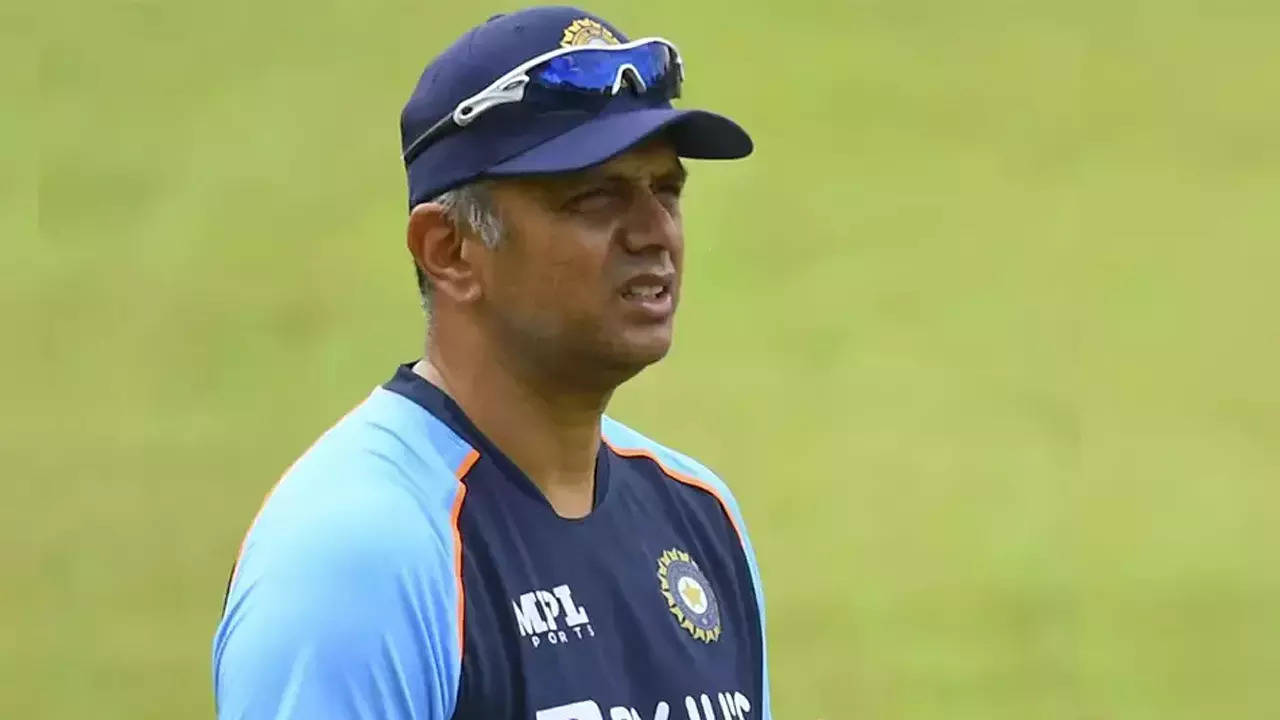Introduction
Welcome to the world of cricket coaching! Coaching a cricket team is a rewarding experience that involves guiding and nurturing young talents, helping them grow as players and individuals. Whether you’re a seasoned
Understanding the Role of a Cricket Coach
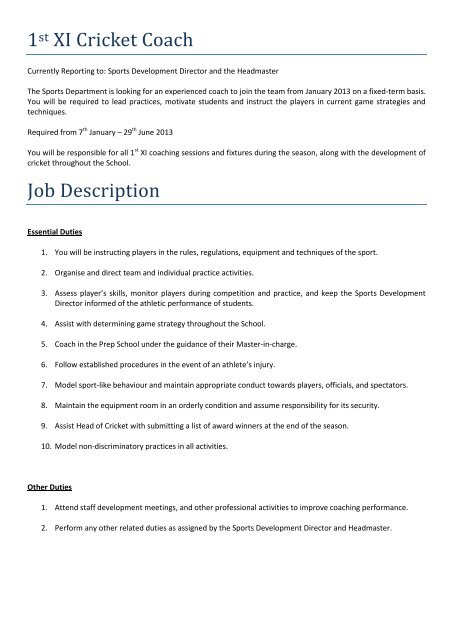
Coaching a cricket team is a multifaceted role that goes beyond just teaching the game’s technical aspects. A successful
1. Player Development
Player development is at the heart of coaching. Coaches are responsible for helping players improve their skills, both individually and as a team. This involves:
- Identifying strengths and weaknesses of each player.
- Creating personalized training plans.
- Focusing on skill enhancement in batting, bowling, fielding, and fitness.
2. Motivation and Mentoring
A cricket coach plays a vital role in motivating and mentoring players:
- Boosting morale during tough times.
- Providing emotional support and guidance.
- Setting clear goals and helping players achieve them.
3. Strategic Planning
Strategic planning is essential for success. Coaches need to:
- Develop game strategies and tactics.
- Study opponents and adapt game plans accordingly.
- Make in-game decisions to maximize the team’s chances of winning.
4. Communication Skills
Effective communication is key in coaching:
- Clearly convey instructions and ideas to players.
- Listen to player feedback and concerns.
- Promote a positive team environment.
5. Leadership and Role Modeling
Coaches must lead by example:
- Exhibit sportsmanship and fair play.
- Instill discipline and respect for the game.
- Be a role model for players to emulate.
6. Team Dynamics
Understanding and managing team dynamics is crucial:
- Building team cohesion and unity.
- Resolving conflicts and maintaining a harmonious atmosphere.
- Recognizing and utilizing the strengths of each player within the team structure.
7. Administrative Responsibilities
Coaches often handle administrative tasks such as:
- Scheduling practices and matches.
- Managing equipment and resources.
- Ensuring player safety and compliance with rules and regulations.
Understanding these facets of a cricket coach’s role is fundamental to excelling in this demanding yet rewarding position. In the next sections, we’ll delve deeper into each aspect, providing practical advice and insights to help you become a successful
Qualities of a Successful Cricket Coach
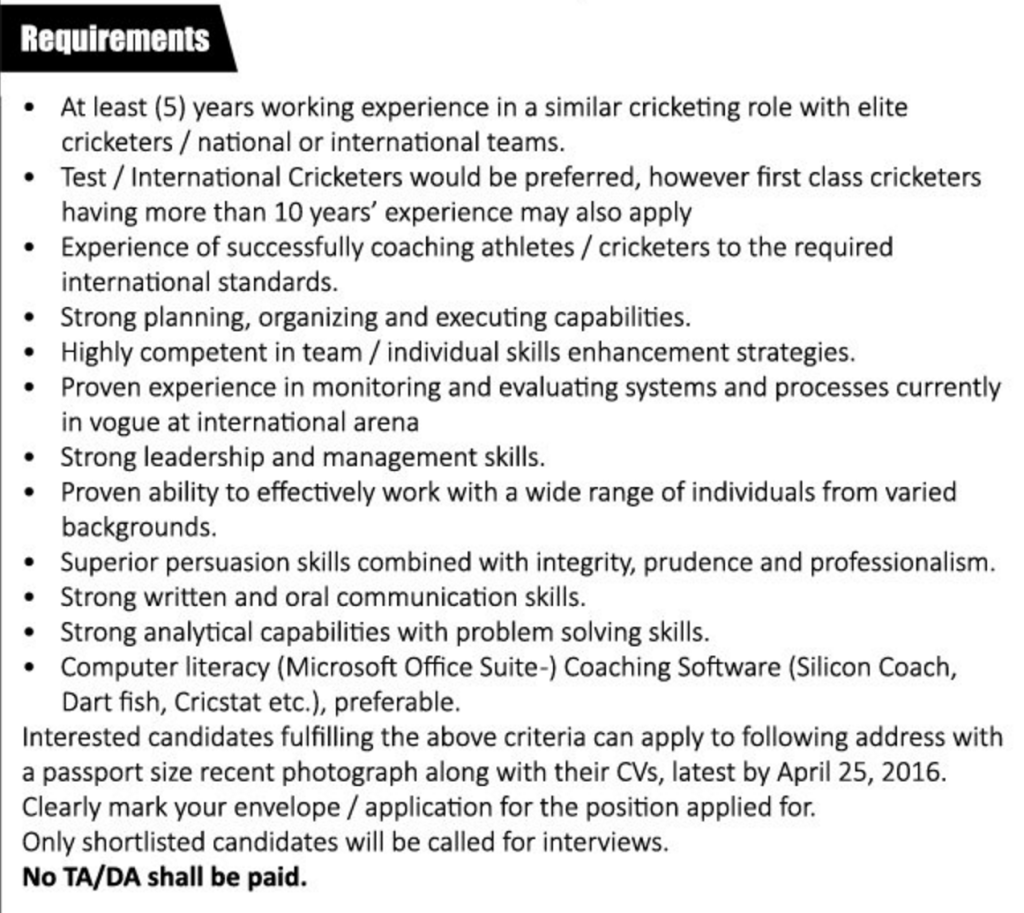
Being a successful cricket coach goes beyond just knowing the game. It requires a unique set of qualities and characteristics that can inspire, motivate, and lead a team to victory. Here are the key qualities that define a successful
1. In-Depth Knowledge
In-depth knowledge of cricket is a fundamental requirement. A coach should have a thorough understanding of the game’s rules, techniques, and strategies. This knowledge serves as the foundation for effective coaching.
2. Patience
Patience is a virtue in coaching. Players at all skill levels will make mistakes and face challenges. A patient coach understands that improvement takes time and supports players through their ups and downs.
3. Effective Communication
Effective communication skills are crucial. Coaches must convey instructions clearly, provide constructive feedback, and listen to players. Clear communication fosters trust and teamwork.
4. Adaptability
Cricket is an ever-evolving game, and a successful coach must be adaptable. They should be open to new strategies and techniques and be willing to adjust their coaching methods based on the team’s needs.
5. Leadership
A coach is a leader both on and off the field. They set an example through their actions, instill discipline, and motivate players to give their best effort. A strong leader inspires confidence in the team.
6. Motivational Skills
Motivational skills are essential to keep players enthusiastic and dedicated. Coaches should inspire their team with pep talks, goal setting, and by celebrating successes, no matter how small.
7. Game Analysis
A successful coach is a keen game analyst. They study opponents, assess match situations, and develop strategies to exploit weaknesses in the opposition. This strategic thinking can make a significant difference in a team’s performance.
8. Empathy
Empathy allows a coach to understand the emotional and personal challenges that players may face. This quality helps create a supportive and inclusive team environment.
9. Technical Expertise
Coaches should possess technical expertise in batting, bowling, and fielding. They should be able to demonstrate proper techniques and provide hands-on guidance during training sessions.
10. Organizational Skills
Organizational skills are vital for planning practices, scheduling matches, and managing team logistics. A well-organized coach ensures that everything runs smoothly.
11. Respect for Fair Play
A successful coach instills a deep respect for fair play and sportsmanship in their players. They emphasize playing by the rules and showing respect to opponents.
12. Adaptation to Individual Needs
Each player is unique, and a great coach adapts their coaching approach to individual needs. They recognize and nurture each player’s strengths and work on improving weaknesses.
These qualities collectively define a successful cricket coach. Cultivating these attributes can help aspiring coaches make a positive impact on their team’s performance and the development of young cricketers.
Planning and Organizing Practices

Efficiently planning and organizing cricket practices is a critical aspect of successful coaching. It ensures that your team makes the most of its training sessions and steadily improves. Here’s a detailed guide on how to plan and organize effective
1. Set Clear Objectives
Set clear objectives for each practice session. Determine what skills or aspects of the game you want to focus on. Whether it’s batting techniques, bowling strategies, or fielding drills, having specific goals helps keep practices productive.
2. Create a Practice Schedule
Develop a practice schedule that outlines when and where practices will occur. Include warm-up and cool-down periods to prevent injuries. A well-structured schedule ensures that all aspects of the game receive attention.
3. Use Varied Drills
Include a variety of drills and exercises in your practice plans. These can include net sessions, fielding drills, fitness routines, and skill-building exercises. A mix of activities keeps players engaged and helps them develop a broad range of skills.
4. Individualized Training
Recognize that each player has unique needs. Provide individualized training plans to address specific weaknesses and enhance strengths. This personalized approach can accelerate player development.
5. Monitor Progress
Keep a close eye on the progress of your players. Maintain records of their performance in various drills and matches. Regular assessments allow you to track improvement and make necessary adjustments to your coaching approach.
6. Team Building Activities
Integrate team building activities into your practices. These activities foster camaraderie, improve communication, and enhance team cohesion. A unified team is more likely to perform well under pressure.
7. Develop a Practice Plan
Before each practice, create a detailed practice plan. Outline the specific drills, duration, and objectives for each segment. Having a plan in place helps you stay organized and ensures that practices run smoothly.
8. Incorporate Match Simulations
Simulate match scenarios during practice. Match simulations help players adapt to game situations and develop decision-making skills under pressure. This is especially important for preparing the team for actual matches.
9. Utilize Technology
Take advantage of technology in your practices. Use video analysis to provide feedback on player techniques and tactics. Access to performance data can help identify areas that require improvement.
10. Provide Feedback
Offer constructive feedback to players after each practice. Highlight their strengths and pinpoint areas for improvement. Encourage open communication, so players can ask questions and seek clarification.
Effective planning and organization of practices are essential for nurturing talent and building a competitive cricket team. By following these guidelines, you can optimize your coaching efforts and help your players reach their full potential.
Developing Cricket Skills
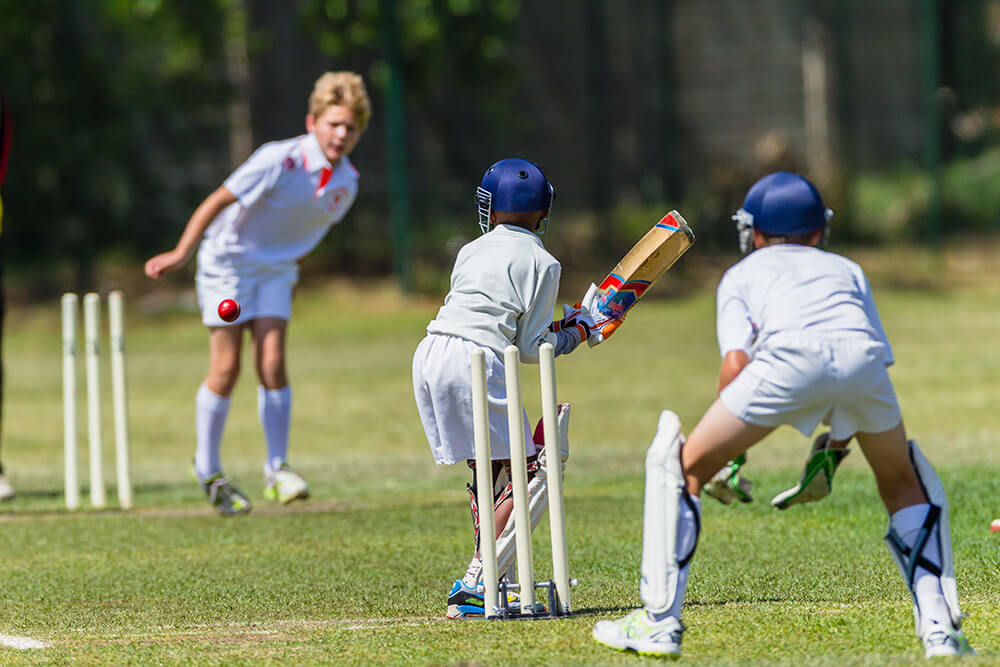
Developing cricket skills is the core of coaching, as it directly impacts a player’s performance on the field. A well-rounded
1. Batting Skills
Batting skills are critical for scoring runs. Coaches should emphasize:
- Proper stance and grip.
- Footwork and balance at the crease.
- Shot selection and timing.
- Dealing with different types of deliveries.
2. Bowling Techniques
For effective bowling techniques, coaches should cover:
- Correct bowling action.
- Variety of deliveries (fast, swing, spin).
- Control and accuracy.
- Strategies for taking wickets.
3. Fielding Proficiency
Fielding proficiency is crucial for saving runs and creating run-out opportunities. Focus on:
- Ground fielding techniques (scooping, diving, sliding).
- Catching under various conditions.
- Throwing accuracy and speed.
- Positioning in the field.
4. Wicketkeeping Skills
Wicketkeeping skills are specialized and require attention to:
- Catching the ball cleanly and confidently.
- Stumping and run-out opportunities.
- Positioning behind the stumps.
- Communication with bowlers and fielders.
5. Physical Fitness
Physical fitness is the foundation for cricket skills. Coaches should include:
- Strength and conditioning routines.
- Endurance and agility training.
- Flexibility exercises.
- Recovery strategies to prevent injuries.
6. Mental Toughness
Mental toughness is as crucial as physical skills. Teach players:
- Focus and concentration during matches.
- Handling pressure and adversity.
- Goal-setting and visualization techniques.
- Team communication and support.
7. Net Practice
Net practice is where players refine their skills. Organize regular net sessions to allow players to work on their batting, bowling, and wicketkeeping under controlled conditions. Provide immediate feedback to correct mistakes.
8. Scenario-based Training
Create scenario-based training exercises that mimic real match situations. This helps players apply their skills strategically and make quick decisions in a game setting.
9. Video Analysis
Utilize video analysis to review and improve techniques. Record players during practice and matches to identify areas that need adjustment or enhancement.
10. Continuous Learning
Continuous learning is vital for both coaches and players. Stay updated with the latest trends in cricket techniques and strategies and encourage your team to do the same.
Developing cricket skills requires dedication, practice, and a well-structured coaching approach. By focusing on these fundamental aspects, coaches can help their players excel in all facets of the game.
Team Building and Communication
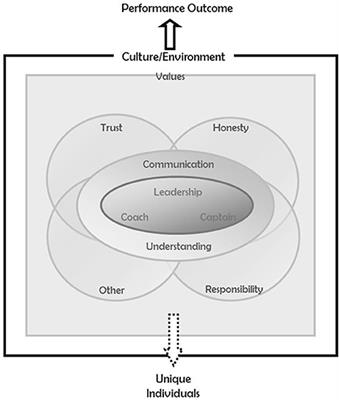
Building a cohesive cricket team and fostering effective communication are essential for success both on and off the field. Let’s explore the intricacies of team building and communication in cricket coaching:
1. Establishing Team Goals
Setting clear team goals is the first step in team building. Define what you aim to achieve as a team for the season. Whether it’s winning championships or improving player skills, shared objectives unite the team.
2. Individual Roles and Responsibilities
Assign individual roles and responsibilities to each player based on their strengths and skills. This ensures that everyone knows their contribution to the team’s success.
3. Communication Channels
Establish effective communication channels within the team. Encourage open dialogue, where players feel comfortable discussing ideas, concerns, and strategies. A communication-friendly environment promotes trust and teamwork.
4. Team Meetings
Hold regular team meetings to discuss game strategies, review performance, and set objectives. These meetings provide a platform for players to share their insights and stay informed about the team’s progress.
5. Trust-Building Activities
Engage in trust-building activities both on and off the field. These can include team-building games, outings, and exercises that foster camaraderie and strengthen the bond among players.
6. Encourage Mentorship
Mentorship within the team can be invaluable. Encourage senior players to mentor younger ones, passing down their knowledge and experiences. This creates a sense of continuity and support within the team.
7. Conflict Resolution
Conflicts are inevitable, but a good coach knows how to handle them. Teach players conflict resolution skills, emphasizing the importance of addressing issues promptly and constructively to maintain team harmony.
8. Constructive Feedback
Provide constructive feedback to players regularly. Highlight their strengths and suggest areas for improvement. Encourage players to give and receive feedback respectfully to foster growth.
9. Team-Building Workshops
Consider organizing team-building workshops that focus on communication, trust, and teamwork. These workshops can help break down barriers and improve cohesion.
10. Celebrate Achievements
Celebrate achievements, both big and small. Acknowledge individual and team successes to boost morale and motivation. Recognizing effort and dedication reinforces the sense of belonging to a successful unit.
11. Lead by Example
As a coach, lead by example. Demonstrate the values, work ethic, and communication skills you want to instill in your players. Your actions speak louder than words.
Team building and effective communication are the bedrock of a successful cricket team. Coaches who prioritize these aspects create an environment where players can thrive, both as individuals and as a cohesive unit on the cricket field.
Game Strategies and Tactics
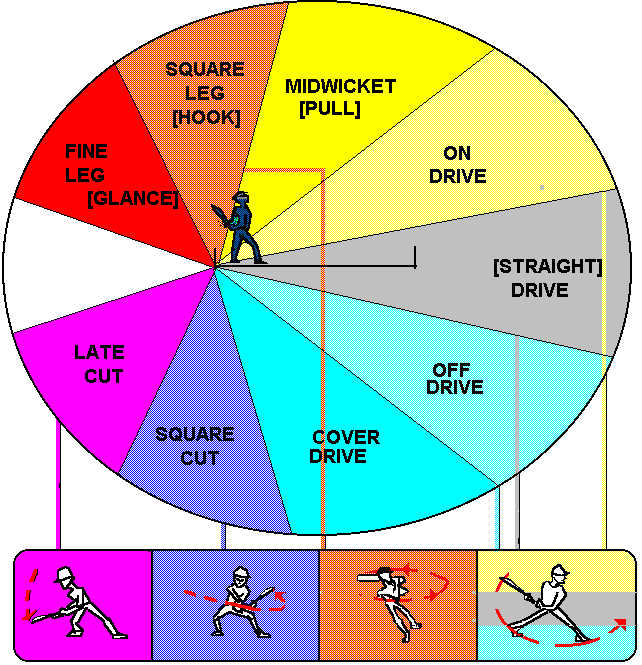
Developing effective game strategies and tactics is a fundamental aspect of cricket coaching. It involves planning, adapting, and executing plans to secure victory on the field. Let’s delve into the intricacies of game strategies and tactics in cricket:
1. Match Analysis
Start by conducting a thorough match analysis of your opponents. Study their strengths, weaknesses, and recent performance. Identify key players and their playing styles to formulate a strategy.
2. Team Formation
Based on the analysis, decide on the optimal team formation. Select the best combination of batsmen, bowlers, all-rounders, and wicketkeeper to match the conditions and opposition.
3. Batting Strategy
Formulate a batting strategy that suits the game situation. Consider factors like pitch conditions, target score, and the strengths and weaknesses of the opposition bowlers. Decide on the batting order accordingly.
4. Bowling Tactics
Plan specific bowling tactics for each opponent’s batsman. Determine line and length, variations, and field placements to exploit their weaknesses. Adapt these tactics based on in-game developments.
5. Field Placement
Field placement plays a crucial role in cricket tactics. Strategically position fielders to minimize scoring opportunities and create pressure on the batsmen. Adjust field placements as the game progresses.
6. Partnership Breaks
Focus on partnership breaks. Identify key partnerships in the opposition and develop plans to break them. Disrupting partnerships can turn the tide of the game in your favor.
7. Rotating Strike
Teach your batsmen the importance of rotating strike. Encourage quick singles and doubles to keep the scoreboard ticking, relieving pressure and frustrating the opposition.
8. Powerplay Utilization
Utilize powerplays wisely. Whether it’s the powerplay overs in limited-overs cricket or taking advantage of the new ball in longer formats, these phases can be game-changing.
9. Assessing DRS Calls
Train your players to make DRS (Decision Review System) calls effectively. Understanding when to challenge umpire decisions can have a significant impact on the game’s outcome.
10. Adaptability
Cricket is dynamic, and the ability to adapt is crucial. Encourage your team to be flexible and adjust strategies as the game unfolds, responding to the opposition’s tactics.
11. Mental Toughness
Develop mental toughness in your players. Teach them to stay focused and composed under pressure, especially in critical moments of the game.
12. Post-Match Analysis
After the game, conduct a post-match analysis. Review what worked and what didn’t, and discuss ways to improve for the next match. Learning from each game is essential for continuous progress.
Game strategies and tactics are the chessboard of cricket, where a well-thought-out plan can lead to victory. As a coach, your role is to empower your team with the knowledge and skills to execute these strategies effectively and adapt to the ever-changing dynamics of the game.
Handling Match Pressure

Cricket is a game of high-pressure moments where the ability to remain composed and make smart decisions under pressure can be the difference between victory and defeat. As a cricket coach, it’s essential to prepare your team to handle match pressure effectively. Here’s how:
1. Mental Preparation
Mental preparation is key. Teach your players strategies to stay focused and calm during tense situations. Breathing exercises, visualization, and positive self-talk can help maintain mental composure.
2. Pressure Simulations
Create pressure simulations during practice sessions. Replicate game situations where players are required to make crucial decisions under pressure. This helps them become accustomed to high-pressure scenarios.
3. Role-Specific Training
Provide role-specific training for different players. Batsmen should practice finishing games, bowlers should learn to defend targets, and fielders should practice taking catches in pressure situations.
4. Match Scenarios
Discuss various match scenarios with your team. Develop strategies and contingency plans for different situations, such as needing to score quickly or defend a low total. Preparation breeds confidence.
5. Communication Under Pressure
Emphasize communication under pressure. Players should be able to convey vital information to their teammates calmly, whether it’s about field placements, bowling changes, or reviewing decisions.
6. Decision-Making Protocols
Establish decision-making protocols for crucial moments. Determine in advance who will make key decisions, such as using DRS or deciding on field placements during the final overs.
7. Focus on the Process
Encourage players to focus on the process rather than the outcome. By concentrating on their individual roles and executing their skills to the best of their abilities, they can relieve some of the pressure.
8. Debriefing After Matches
Conduct debriefing sessions after matches to analyze how your team handled pressure situations. Identify areas for improvement and celebrate instances where players successfully managed pressure.
9. Visualization Techniques
Teach visualization techniques to your players. Encourage them to mentally rehearse making the right decisions and executing crucial skills under pressure. Visualization can boost confidence and composure.
10. Confidence Building
Confidence building is essential. Remind your players of their training and past successes. A confident mindset can help players approach pressure situations with a positive attitude.
11. Learn from Experience
Lastly, remind your team that handling pressure is a skill that improves with experience. Encourage them to learn from both successful moments and setbacks and use those experiences to become better equipped for future challenges.
Handling match pressure is a skill that separates great cricket teams from good ones. By incorporating these strategies and creating a supportive learning environment, you can prepare your team to thrive in high-pressure situations and achieve success on the cricket field.
Dealing with Player Development

Player development is at the heart of cricket coaching, and it involves nurturing talents, enhancing skills, and fostering personal growth. As a cricket coach, here are key strategies for effectively dealing with player development:
1. Individualized Coaching Plans
Recognize that each player is unique and at different stages of development. Create individualized coaching plans tailored to their specific needs, focusing on skill improvement, physical conditioning, and mental development.
2. Skill Assessment
Conduct regular skill assessments to gauge the progress of your players. Identify their strengths and weaknesses, and use this data to refine coaching plans and set achievable goals.
3. Goal Setting
Involve players in the goal-setting process. Encourage them to set both short-term and long-term goals related to their cricketing skills, fitness levels, and overall performance.
4. Technical Coaching
Provide technical coaching to hone cricket-specific skills. This includes batting techniques, bowling actions, fielding drills, and wicketkeeping skills. Correcting and refining techniques is an ongoing process.
5. Physical Conditioning
Emphasize the importance of physical conditioning. Develop fitness routines that improve strength, endurance, and agility, tailored to the demands of cricket. Work on injury prevention as well.
6. Mental Resilience
Mental resilience is vital. Teach players to handle pressure, build confidence, and maintain focus during matches. Incorporate mental conditioning exercises and visualization techniques into training.
7. Game Awareness
Enhance game awareness. Help players understand the nuances of match situations, such as reading the game, assessing field placements, and making tactical decisions in real-time.
8. Feedback and Communication
Feedback and communication should be constant. Regularly discuss progress with players, highlighting their strengths and areas for improvement. Encourage open dialogue so they can voice concerns and seek guidance.
9. Exposure to Competitive Cricket
Expose players to competitive cricket regularly. Encourage them to participate in matches, tournaments, and leagues to apply what they’ve learned in practice and gain valuable experience.
10. Supportive Environment
Create a supportive and inclusive environment where players feel motivated to excel. Foster teamwork, camaraderie, and a culture of mutual respect among players.
11. Continuous Learning
Instill a culture of continuous learning in your team. Encourage players to watch and learn from professional cricket matches, read about cricket strategies, and stay updated with the latest developments in the sport.
12. Player Wellbeing
Lastly, prioritize player wellbeing. Monitor physical and emotional health, and provide resources for any additional support needed, such as nutrition guidance or access to sports psychologists.
Dealing with player development is a dynamic and ongoing process. By implementing these strategies and maintaining a player-centric approach, you can help your cricket team grow, both as skilled athletes and well-rounded individuals.
Balancing Discipline and Motivation
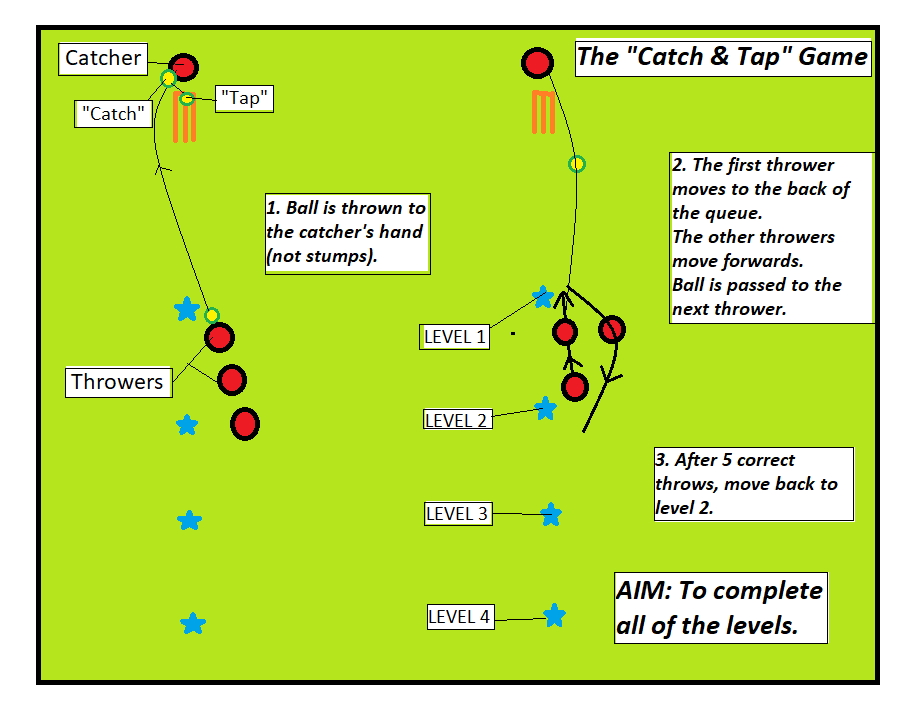
As a cricket coach, finding the right balance between discipline and motivation is crucial for creating a successful and harmonious team environment. Striking this balance helps players develop both as individuals and as a cohesive unit. Here are strategies for achieving that balance:
1. Establish Clear Expectations
Begin by establishing clear expectations for your team. Communicate your rules and guidelines regarding behavior, commitment, and performance. Transparency sets the foundation for discipline.
2. Lead by Example
Lead by example in terms of discipline and commitment. Show your dedication to the sport, punctuality, and professionalism. Your behavior will influence your players’ attitudes.
3. Individualized Approach
Recognize that each player has unique motivations and needs. Take an individualized approach to discipline and motivation. Some players may respond well to strict guidelines, while others thrive with more autonomy.
4. Positive Reinforcement
Use positive reinforcement to motivate your players. Celebrate their successes, no matter how small, and acknowledge their hard work and progress. Positive feedback boosts morale and determination.
5. Constructive Criticism
Offer constructive criticism when needed. Point out areas for improvement in a respectful and encouraging manner. Players are more likely to accept feedback when it is delivered constructively.
6. Goal Setting
Involve your players in the goal-setting process. Encourage them to set personal and team goals. Having clear objectives creates motivation and a sense of purpose.
7. Accountability Partners
Pair players as accountability partners. They can support each other in adhering to training schedules, diets, and other commitments. This peer support system can boost motivation.
8. Team Building Activities
Organize team building activities to foster camaraderie and a sense of belonging. These activities build team spirit and can increase players’ intrinsic motivation to perform well for the team.
9. Consistent Communication
Maintain consistent communication with your players. Encourage an open-door policy where players can discuss concerns, share ideas, and seek guidance. Effective communication strengthens trust and motivation.
10. Adapt to Individual Needs
Adapt your coaching approach to individual needs. Some players may require a more disciplined and structured training regimen, while others thrive with creative freedom. Flexibility in coaching promotes motivation.
11. Celebrate Effort
Celebrate effort as much as results. Highlight the commitment and hard work put in by players, irrespective of the outcome. This encourages players to give their best in every practice and match.
12. Address Discipline Issues Swiftly
If discipline issues arise, address them swiftly but fairly. Use corrective measures like benching a player for a match or additional training sessions. Discipline should serve as a learning opportunity.
Effective coaching involves finding the equilibrium between discipline and motivation. By combining clear expectations, positive reinforcement, constructive criticism, and a flexible coaching approach, you can cultivate a team that is disciplined, motivated, and ready to excel in cricket.
Player Assessment and Feedback
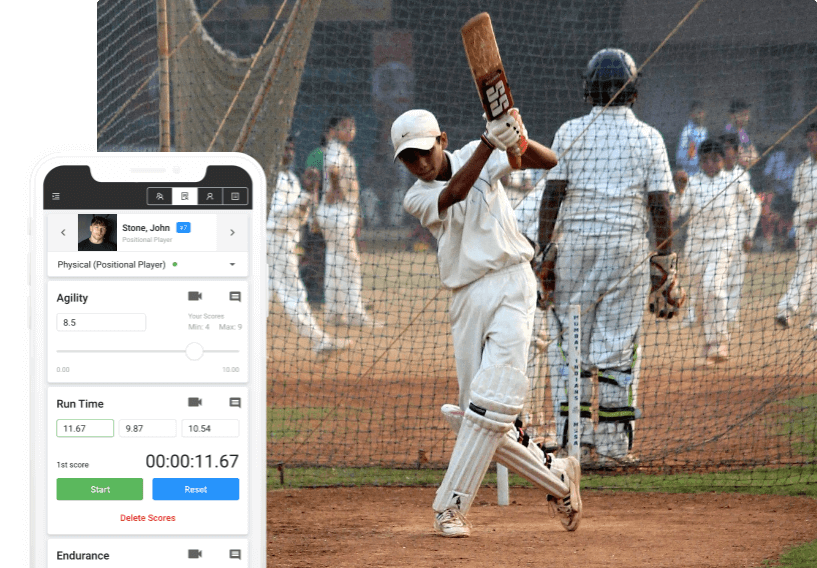
Assessing your players’ performance and providing constructive feedback is a fundamental aspect of cricket coaching. Effective player assessment and feedback not only help players improve their skills but also contribute to team development. Here’s a comprehensive approach to player assessment and feedback:
1. Skill Evaluation
Begin with a thorough skill evaluation. Assess each player’s batting, bowling, fielding, and wicketkeeping abilities. Note their strengths, weaknesses, and areas for improvement.
2. Match Performance Analysis
Review match performances meticulously. Analyze batting and bowling statistics, fielding contributions, and decision-making during matches. Identify patterns and trends in their play.
3. Fitness Assessment
Conduct fitness assessments to evaluate players’ physical conditioning. Measure parameters such as strength, speed, endurance, and agility. Assessing fitness levels is essential for injury prevention and overall performance.
4. Mental Resilience
Evaluate mental resilience. Assess how players handle pressure, their focus during matches, and their ability to rebound from setbacks. Mental toughness is a critical aspect of cricket.
5. Goal Progress
Review the progress of goals set by the players. Are they achieving the goals they set for themselves? This assessment provides insight into their commitment and determination.
6. Video Analysis
Utilize video analysis to provide visual feedback. Record players during practice and matches to pinpoint technical errors and areas for improvement. Visual feedback is highly effective for skill development.
7. Individual Meetings
Hold individual meetings with each player to discuss their assessment. Be honest but constructive in your feedback. Highlight their strengths, acknowledge their efforts, and suggest specific ways to improve.
8. Goal Setting
Collaboratively set goals for each player based on their assessment. Goals should be specific, measurable, achievable, relevant, and time-bound (SMART). Players should have a clear path for improvement.
9. Regular Progress Checks
Conduct regular progress checks. Monitor the players’ development over time and track their performance in various aspects of the game. Regular assessments help you and the players gauge improvement.
10. Group Feedback Sessions
Organize group feedback sessions. Encourage players to share their experiences and insights with each other. This promotes a culture of continuous learning and peer support.
11. Celebrate Achievements
Celebrate achievements, both big and small. Recognize and reward players for their progress and accomplishments. Positive reinforcement boosts morale and motivation.
12. Communication
Maintain open and ongoing communication with your players. Encourage them to ask questions, seek clarification, and voice their concerns. Effective communication fosters trust and mutual understanding.
Player assessment and feedback are integral to player development. By following these comprehensive steps and tailoring your approach to each player’s unique needs, you can help your cricket team continuously improve and reach their full potential.
Safety and Injury Management
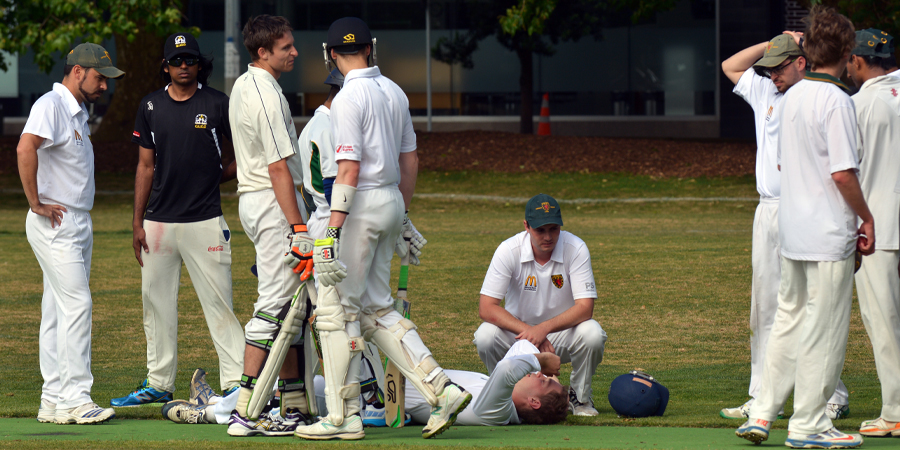
Ensuring the safety of your cricket players and effectively managing injuries is paramount in cricket coaching. A proactive approach to safety and injury management not only keeps your team healthy but also helps maintain performance consistency. Here’s a comprehensive guide:
1. Pre-Season Medical Checkups
Before the season begins, arrange pre-season medical checkups for all players. This includes a thorough examination by a medical professional to identify any pre-existing conditions or injury risks.
2. Warm-Up and Cool-Down Routines
Implement warm-up and cool-down routines as a non-negotiable part of training and matches. A proper warm-up reduces the risk of injury, and a cool-down helps with recovery and muscle relaxation.
3. Equipment Check
Regularly check all cricket equipment for wear and tear. Inspect helmets, pads, gloves, and footwear to ensure they are in good condition. Replace damaged gear promptly.
4. Protective Gear
Emphasize the use of protective gear. Ensure that every player wears appropriate safety gear, including helmets, shin guards, thigh pads, and abdominal guards while batting and wicketkeeping.
5. Hydration and Nutrition
Teach players the importance of hydration and nutrition. Properly hydrating before, during, and after matches is crucial. Encourage a balanced diet to support muscle recovery and injury prevention.
6. Player Education
Educate players about common cricket injuries and their prevention. Make sure they are aware of the risks associated with overuse injuries, such as stress fractures and tendonitis.
7. Injury Protocols
Develop clear injury protocols for your team. Ensure that all players know how to respond to injuries, from minor sprains to more serious issues. Establish procedures for seeking medical attention promptly.
8. First Aid Training
Train team personnel, including coaches, managers, and designated individuals, in first aid. Having knowledgeable individuals on hand can make a significant difference in injury management.
9. Rehabilitation Programs
Create rehabilitation programs for injured players. Work with medical professionals to design tailored recovery plans, including exercises and timelines for returning to play.
10. Monitoring Workload
Monitor players’ workload carefully, especially during intensive training and match periods. Avoid overtraining, which can lead to fatigue-related injuries.
11. Mental Health Awareness
Recognize the importance of mental health awareness. Create an environment where players feel comfortable discussing mental health concerns. Stress and anxiety can affect physical performance and injury risk.
12. Post-Injury Support
Offer post-injury support to players during their recovery. Maintain communication, provide encouragement, and help them gradually reintegrate into training and matches when cleared by medical professionals.
Safety and injury management should be top priorities in cricket coaching. By implementing these strategies and fostering a culture of safety and well-being, you can reduce the risk of injuries and ensure the long-term health and performance of your cricket team.
